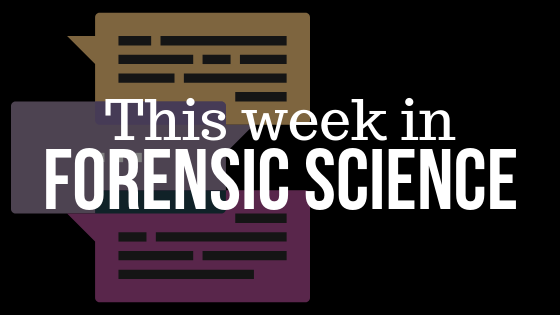No one has hours to scour the papers to keep up with the latest news, so we’ve curated the top news stories in the field of Forensic Science for this week. Here’s what you need to know to get out the door!
How a DNA Database Helped Solve a Horrific Double Murder (NY Daily News – 8/25/2019)
In 2004, a Starkville detective named Bill Lott inherited the case and was pleased to learn that Crigler’s rape-kit evidence had been preserved. Forensic technicians extracted DNA and ran the results through state and federal criminal databases.
But the sample returned no match. The case got new momentum in September 2017 from a true-crime podcast, “Knock Knock,” by Betty Jones’ step-grandsons, Simon and Jason B. Jones.
Selfie Smiles May Aid Forensic Identification, say Dundee Experts (The Courier – 8/25/2019)
Selfies taken by missing persons before they disappear could prove key for future forensic dental identification, according to an expert studying at Dundee University.
Healthy Nevada Project is Studying the Strands of our DNA (Las Vegas Sun – 8/25/2019)
- The Healthy Nevada Project, which allows people to get no-cost DNA testing, has become the fastest-growing community-based population health study in the world. The goals of the project are to improve health literacy, give patients actionable personal health data and results that foster a desire to lead healthier lives, improve medical research and save lives in Nevada.
How do We Improve Forensics? (The Washington Post – 8/26/2019)
Suggest three reforms — low-, mid- and high-hanging fruit — that would improve the quality of expert testimony in criminal cases.
Oldest Parasite DNA Yet Recorded Found in Prehistoric Puma Poo (The Guardian – 8/27/2019)
Coprolite reveals felines in southern Andes had roundworm 17,000 years ago, long before humans got there
DNA Leads to Arrest in 1988 East Texas Death, Body in River (ABC News – 8/27/2019)
Investigators say DNA evidence has led to the arrest of a convicted sex offender suspected in the 1988 death of a Southeast Texas woman whose body was found in a river.
Inside Afghanistan’s Main Forensic Lab: Four Scientists, One Microscope (Los Angeles Times – 8/28/2019)
This is the Forensic Medicine Directorate, Criminal Techniques Department, the only functioning criminal forensic laboratory in Afghanistan, where a team of four molecular biologists juggles hundreds of cases a week, including victims of rape, drug overdoses, homicide, and bombings.
Humanitarian Forensic Scientists Trace the Missing, Identify the Dead and Comfort the Living (The Conversation – 8/28/2019)
The word “forensic” is typically associated with crimes and legal disputes. Forensic medicine, for example, applies medical knowledge to establish the causes of injury or death.
But forensic science can have a humanitarian role, too. Working under international humanitarian law rather than local or federal criminal systems, these forensic experts help ensure the proper identification and respectful handling of people who die during war, natural disaster and migration, preventing them from becoming missing persons.
Justice for John Doe: La Jolla Native Solves Cold Cases with Forensic Genealogy (La Jolla Light – 8/28/2019)
For La Jolla native Lee Bingham Redgrave, working in forensics to solve cold cases (which have not yet been fully resolved and are not the subject of a recent criminal investigation) has been a longtime passion.
Ex-Denver DA Using Familial DNA to Heat Up Cold Murder Cases (Westword – 8/29/2019)
Mitch Morrissey is still going after criminals. He’s both the chief operating officer and chief financial officer of United Data Connect, a Denver-based business that uses familial DNA technology Morrissey pioneered as a prosecutor to solve cold cases, among other things — and he notes with pride that the software in which his firm specializes has scored some notable successes.
Fossil DNA Reveals New Twists in Modern Human Origins (Quanta Magazine – 8/29/2019)
Modern humans and more ancient hominins interbred many times throughout Eurasia and Africa, and the genetic flow went both ways.
WOULD YOU LIKE TO SEE MORE ARTICLES LIKE THIS? SUBSCRIBE TO THE ISHI BLOG BELOW!
SUBSCRIBE NOW!


